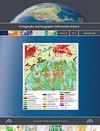Natural language processing meets spatial time series analysis and geovisualization: identifying and visualizing spatio-topical sentiment trends on Twitter
IF 2.4
3区 地球科学
Q1 GEOGRAPHY
Cartography and Geographic Information Science
Pub Date : 2023-10-26
DOI:10.1080/15230406.2023.2264751
引用次数: 0
Abstract
ABSTRACTPrevious studies have introduced various approaches for visualizing the spatial and temporal distributions of sentiments expressed on social media. However, many existing methods either overlook the evolving nature of sentiments or fail to account for the spatial distribution of sentiment trends related to specific topics. To gain a comprehensive understanding of how sentiments evolve in relation to topics and geographies, it is essential to capture the dynamic nature of sentiment through time series analysis and geovisualization. This article introduces a workflow that combines natural language processing, spatial time series analysis, and geovisualization techniques to identify and visualize the variations in sentiment trends on Twitter across different geographic regions and topics. By examining the 2016 presidential debates as a case study, we uncover distinct temporal patterns in sentiment distributions across various topics and states. Our findings also show that adjacent states do not always share similar sentiment trends, and that geographic clusters with similar sentiment trends also vary across topics. Failing to consider these variations may result in misunderstanding public discourse and sentiments since they are diverse and dynamic in nature.KEYWORDS: Sentiment trendsnatural language processingspatial time series analysisgeovisualizationTwitter AcknowledgmentsThe authors would like to thank the anonymous reviewers for their valuable insights. The reviewers’ constructive comments greatly contributed to the improvement of this manuscript.Disclosure statementNo potential conflict of interest was reported by the author(s).Data availability statementTwitter data used in this study are openly available in figshare at https://doi.org/10.6084/m9.figshare.20277840.v1. The shared data contain tweet IDs related to a series of three presidential debates in 2016 between the dates of September 26 and 26 October 2016.Supplementary dataSupplemental data for this article can be accessed online at https://doi.org/10.1080/15230406.2023.2264751.自然语言处理满足空间时间序列分析和地理可视化:识别和可视化Twitter上的空间主题情绪趋势
摘要以前的研究已经引入了各种方法来可视化社交媒体上表达的情绪的时空分布。然而,许多现有的方法要么忽略了情绪的演变性质,要么无法解释与特定主题相关的情绪趋势的空间分布。为了全面了解情感是如何随着主题和地理位置的变化而演变的,通过时间序列分析和地理可视化来捕捉情感的动态本质是至关重要的。本文介绍了一个结合了自然语言处理、空间时间序列分析和地理可视化技术的工作流,以识别和可视化Twitter上不同地理区域和主题的情绪趋势变化。通过将2016年的总统辩论作为案例研究,我们发现了不同主题和州的情绪分布的不同时间模式。我们的研究结果还表明,相邻的州并不总是具有相似的情绪趋势,并且具有相似情绪趋势的地理集群也因主题而异。如果不考虑这些变化,可能会导致误解公众话语和情绪,因为它们具有多样性和动态性。关键词:情感趋势、自然语言处理、空间时间序列分析、地理可视化、twitter致谢作者感谢匿名审稿人提供的宝贵见解。审稿人的建设性意见对本文的改进起到了很大的作用。披露声明作者未报告潜在的利益冲突。数据可用性声明本研究中使用的twitter数据可在https://doi.org/10.6084/m9.figshare.20277840.v1的figshare中公开获取。共享的数据包含了2016年9月26日至10月26日期间三场总统辩论的推特id。本文的补充数据可以在线访问https://doi.org/10.1080/15230406.2023.2264751。
本文章由计算机程序翻译,如有差异,请以英文原文为准。
求助全文
约1分钟内获得全文
求助全文
来源期刊
CiteScore
5.20
自引率
20.00%
发文量
23
期刊介绍:
Cartography and Geographic Information Science (CaGIS) is the official publication of the Cartography and Geographic Information Society (CaGIS), a member organization of the American Congress on Surveying and Mapping (ACSM). The Cartography and Geographic Information Society supports research, education, and practices that improve the understanding, creation, analysis, and use of maps and geographic information. The society serves as a forum for the exchange of original concepts, techniques, approaches, and experiences by those who design, implement, and use geospatial technologies through the publication of authoritative articles and international papers.

 求助内容:
求助内容: 应助结果提醒方式:
应助结果提醒方式:


